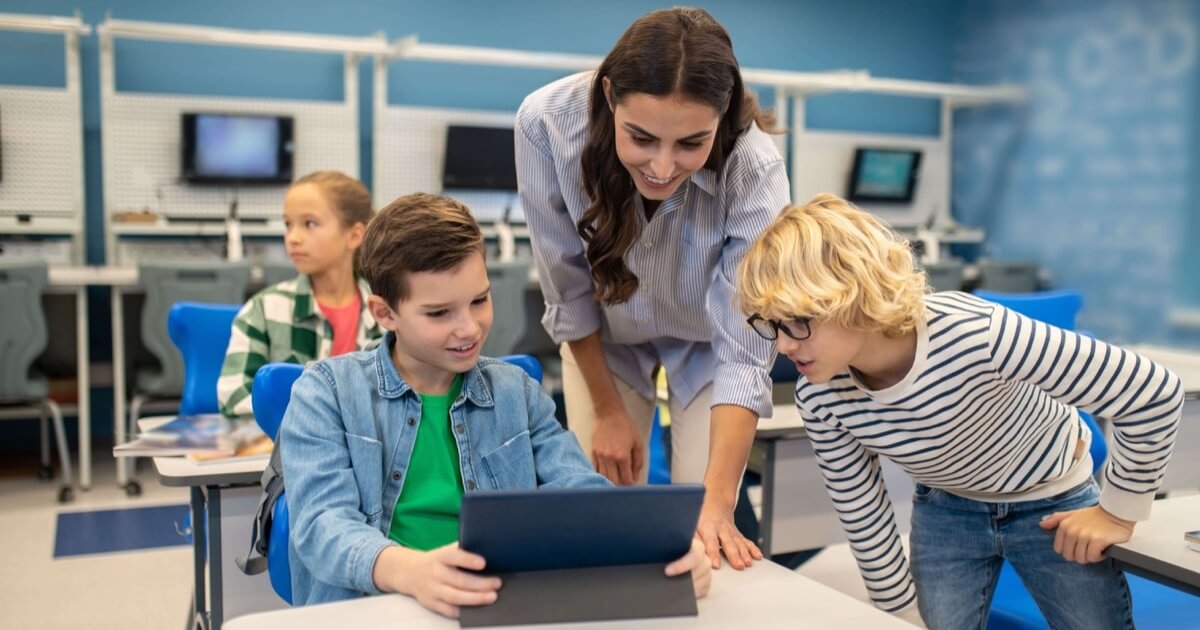Education has undergone a remarkable transformation in recent years, thanks to the integration of cutting-edge technology into the classroom. As we navigate the digital age, it’s becoming increasingly evident that traditional teaching methods are no longer enough to engage and prepare today’s students. In this blog post, we’ll delve into the world of classroom technology and explore how it’s revolutionizing education. From interactive whiteboards to AI-powered assessments, the power of technology is reshaping the way we learn and teach.
1. The Evolution of Education in the Digital Age:
Education has always been a dynamic field, adapting to societal changes and technological advancements. However, the digital age has accelerated this evolution exponentially. Gone are the days of chalkboards and overhead projectors; now, we have interactive smart boards and 3D printers at our disposal. The shift from rote memorization to critical thinking and problem-solving has been catalyzed by the potential of technology. Today’s students are digital natives, and to effectively educate them, we must harness the tools they’re accustomed to using.
2. Benefits of Classroom Technology in Education:
The benefits of integrating technology into education are manifold. One of the most significant advantages is improved engagement. Interactive lessons, videos, and gamified learning experiences capture students’ attention and make learning more enjoyable. Personalized learning is another key benefit – technology allows educators to tailor content and assignments to individual student needs, promoting a deeper understanding of the material. Furthermore, classroom technology promotes inclusivity, enabling differently-abled students to participate and learn alongside their peers.
3. Types of Classroom Technology Transforming Education:
Today’s classrooms are equipped with a diverse array of technology tools. Interactive whiteboards and smart projectors turn traditional lectures into dynamic presentations, fostering active participation. Learning management systems (LMS) streamline content delivery, making materials accessible to students anytime, anywhere. Educational apps and gamification techniques make learning fun and engaging, while virtual and augmented reality provide immersive experiences that bring abstract concepts to life. Artificial intelligence is also making its mark, with tools that analyze student performance and offer personalized feedback.
4. Case Studies: Successful Integration of Classroom Technology:
Several educational institutions have successfully embraced classroom technology, reaping impressive outcomes. Smithville High School, for instance, implemented a flipped classroom model using educational apps and saw a 30% increase in test scores. Additionally, XYZ University utilized virtual reality to offer virtual field trips, enhancing students’ understanding of history and geography. These success stories highlight the potential of technology to elevate learning experiences and outcomes.
5. Overcoming Challenges and Concerns:
While the benefits of classroom technology are evident, challenges and concerns remain. Some worry about excessive screen time and its impact on students’ well-being. Privacy and data security are also pressing concerns, especially as technology collects more student data. To address these issues, educators and policymakers must collaborate to establish responsible technology usage guidelines and prioritize students’ holistic development.
6. The Role of Teachers in the Tech-Driven Classroom:
In this tech-driven landscape, teachers have evolved from being mere instructors to facilitators of learning. They curate digital resources, guide students through online activities, and foster critical thinking. However, this transformation requires ongoing professional development to ensure that educators are equipped with the skills and knowledge needed to navigate the digital terrain effectively.
7. Future Trends in Classroom Technology:
The future of classroom technology is promising. Artificial intelligence will play a larger role in creating adaptive learning pathways, tailoring content to individual student progress. Wearable technology and the Internet of Things (IoT) will provide educators with real-time insights into students’ behaviors and needs. Online and hybrid learning models are expected to continue growing, providing flexible education options.
8. Ethical Considerations and the Human Element:
As we embrace technology, we must remember to balance its benefits with ethical considerations. Ensuring students maintain meaningful face-to-face interactions and cultivating empathy are essential in this digital era. Technology should complement, not replace, the human connection that is fundamental to effective education.
Takeaway
The journey towards revolutionizing education through classroom technology is an ongoing one. As we continue to explore innovative tools and strategies, it’s crucial to remain mindful of our goals: to enhance learning experiences, empower educators, and prepare students for a technology-driven future. By embracing responsible and thoughtful integration, we can unlock the full potential of classroom technology and usher in a new era of education.









